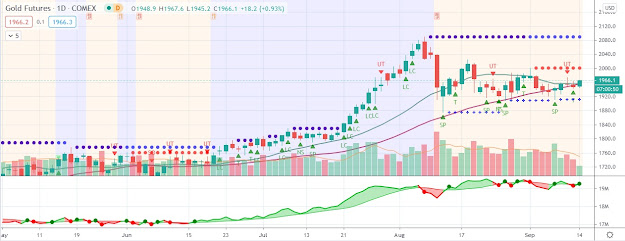The gold price turned lower on Tuesday as the U.S. dollar rallied following the release of Ben Bernanke’s semi-annual testimony to Congress
The gold price turned lower on Tuesday as the U.S. dollar rallied
following the release of Ben Bernanke’s semi-annual testimony to
Congress. The price of gold
rose to an overnight high of $1,598.73 per ounce, but later surrendered
its gains, falling as much as $11.02, or 0.7%, to $1,578.89 in morning
trading. The U.S. Dollar Index (DXY) climbed 0.3% to 83.48 after the
markets interpreted the Fed Chairman’s remarks as less dovish than
expected.
In his first public remarks since last month’s FOMC meeting, Bernanke acknowledged that “economic activity appears to have decelerated somewhat” in recent months. He also cited the European sovereign debt crisis and the “U.S. fiscal situation” as two primary risk factors for the U.S. economy.
As for monetary policy, Bernanke only discussed the Fed’s decision last month to extend Operation Twist and reiterate his pledge to keep the Fed Funds rate near zero through late 2014. There was no mention of a potential new asset purchase program, i.e. a third round of quantitative easing (QE3).
Daniel Brebner, an analyst at Deutsche Bank, wrote in a note to clients prior to the testimony that “As it sees the U.S. data continue to deteriorate, the market is starting to anticipate some kind of action, or at least rhetoric, from the Fed to support growth…Will Bernanke come out dovish as usual? I think so. Will he explicitly discuss his options? I’m not convinced he will. So I’m not sure he’s going to give the market what it wants.”
The sell-off in the broader markets, as well as in the price of gold, reflected the disappointment to which Brebner alluded.
Following the release of the Federal Reserve Chairman’s testimony, Goldman Sachs published a note to clients that Bernanke did “not break new ground relative to previous FOMC communication.” Overall, Goldman characterized his prepared remarks as “noncommittal,” though it did acknowledge that Bernanke “spent more time than usual on downside risks” to the U.S. economy.
In his first public remarks since last month’s FOMC meeting, Bernanke acknowledged that “economic activity appears to have decelerated somewhat” in recent months. He also cited the European sovereign debt crisis and the “U.S. fiscal situation” as two primary risk factors for the U.S. economy.
As for monetary policy, Bernanke only discussed the Fed’s decision last month to extend Operation Twist and reiterate his pledge to keep the Fed Funds rate near zero through late 2014. There was no mention of a potential new asset purchase program, i.e. a third round of quantitative easing (QE3).
Daniel Brebner, an analyst at Deutsche Bank, wrote in a note to clients prior to the testimony that “As it sees the U.S. data continue to deteriorate, the market is starting to anticipate some kind of action, or at least rhetoric, from the Fed to support growth…Will Bernanke come out dovish as usual? I think so. Will he explicitly discuss his options? I’m not convinced he will. So I’m not sure he’s going to give the market what it wants.”
The sell-off in the broader markets, as well as in the price of gold, reflected the disappointment to which Brebner alluded.
Following the release of the Federal Reserve Chairman’s testimony, Goldman Sachs published a note to clients that Bernanke did “not break new ground relative to previous FOMC communication.” Overall, Goldman characterized his prepared remarks as “noncommittal,” though it did acknowledge that Bernanke “spent more time than usual on downside risks” to the U.S. economy.




Comments
Post a Comment